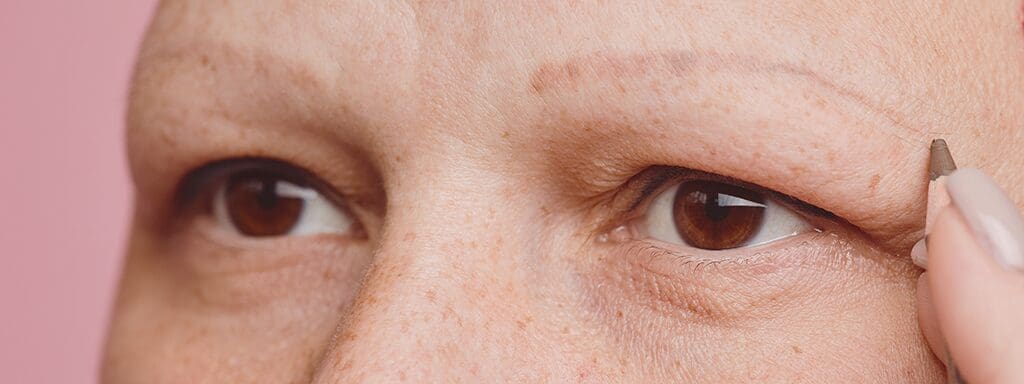
Eli Lilly and Company announced today that the Medicines and Healthcare products Regulatory Agency (MHRA) has granted marketing authorisation (MA) for baricitinib (OLUMIANT®) for the treatment of severe alopecia areata (AA) in adult patients.
“Alopecia areata is an often-misunderstood autoimmune disease that can lead to unpredictable hair loss, ranging from bald patches to complete loss of all hair. The disease can be perceived as a cosmetic condition but carries significant psychosocial burden and can impact patients of any race, ethnicity, or age, with many experiencing alopecia in their early to mid-20s,” said Dr Paul Farrant, Consultant Dermatologist. “This is an important authorisation for patients as previously there has never been a licensed oral therapy for adults with severe alopecia areata.”
Sue Schilling, Chief Executive of Alopecia UK, welcomes the news: “This authorisation may lead to further treatment options now being offered to those eligible patients struggling with alopecia areata. We will continue to ensure our voice is heard where appropriate and will try to demonstrate the psychological, social and financial impacts that alopecia areata can have to a person’s life to emphasise the importance of having access to treatments.
“This authorisation establishes baricitinib as the first JAK inhibitor to be authorised in Great Britain for the treatment of adults with severe alopecia areata and reflects our commitment to immunological diseases with high unmet need,” said Dr Jeff Yang, Associate Vice President – Medical, Northern Europe, Eli Lilly and Company. “We understand the importance of establishing a novel treatment option for eligible patients and Lilly would like to thank the patients and investigators around the world who have made this possible.”
This authorisation was based on Lilly’s Phase 3 BRAVE-AA1 and BRAVE-AA2 trials evaluating the efficacy and safety of baricitinib in 1,200 patients with severe AA randomised to receive either baricitinib or placebo, the largest Phase 3 clinical trial programme with completed primary endpoints. In both trials, the Severity of Alopecia Tool (SALT) score was used to measure severity of disease; the SALT score ranges from 0 to 100, with 0 representing no scalp hair loss and 100 representing complete scalp hair loss2. The primary endpoint was the proportion of patients achieving SALT ≤20 (80% or more scalp hair coverage) at Week 36.1
In both studies, a significantly greater proportion of patients randomised to baricitinib 4 mg once daily achieved a SALT ≤ 20 at week 36 compared to placebo, starting as early as week 8 in study BRAVE-AA1 and week 12 in study BRAVE-AA2. In pooled data from both studies, 34% of patients taking baricitinib 4-mg (n=515) achieved 80% or more scalp hair coverage compared to 4.1% of patients taking placebo (n=345) at week 36 (p≤0.001 for comparisons to placebo within each individual study).1
Eyebrow and eyelash hair loss was evaluated using the Clinician-Reported Outcome (ClinRO) Measure for Eyebrow Hair Loss™ and ClinRO Measure for Eyelash Hair Loss™ – novel, clinically-validated tools developed by Lilly.1
Achievement of full regrowth or regrowth with minimal gaps in eyebrow and eyelash hair was also seen at week 36 with baricitinib 4-mg for patients who at baseline had significant gaps or no notable eyebrows or eyelashes, as compared to patients taking placebo. In pooled data from both studies, 33% of patients taking baricitinib 4-mg (n=349) achieved ClinRO Measure for Eyebrow Hair Loss of 0 or 1 at week 36 with a ≥ 2-point improvement from baseline compared to 3.8% of patients taking placebo (n=236) at week 36 (p≤0.001 for comparisons to placebo within each individual study).1 In pooled data from both studies, 33.9% of patients taking baricitinib 4-mg (n=307) achieved ClinRO Measure for Eyelash Hair Loss of 0 or 1 at week 36 with a ≥ 2-point improvement from baseline compared to 4.3% of patients taking placebo (n=186) a week 36 (p≤0.001 for comparisons to placebo within each individual study).1
The Phase 3 BRAVE-AA clinical program also evaluated the safety profile of baricitinib. Few patients discontinued treatment due to adverse events (2.6% or less across both studies), and the majority of treatment-emergent adverse events were mild or moderate in severity.2In integrated data from clinical trials and/or postmarketing settings across Rheumatoid Arthritis, Atopic Dermatis and Alopecia Areata indications the most commonly reported adverse reactions with baricitinib are increased LDL cholesterol (26.0 %), upper respiratory tract infections (16.9 %), headache (5.2 %), herpes simplex (3.2 %), and urinary tract infections (2.9 %).1
Folliculitis was observed in the alopecia areata clinical trials at the rate of common (≥ 1/100 to < 1/10). It was usually localized in the scalp region associated with hair regrowth.1
Extension phases of the trials are ongoing since observations for adverse effects over longer periods of time are required.2